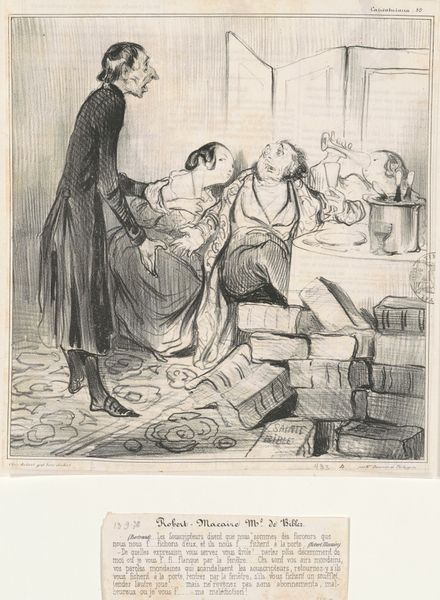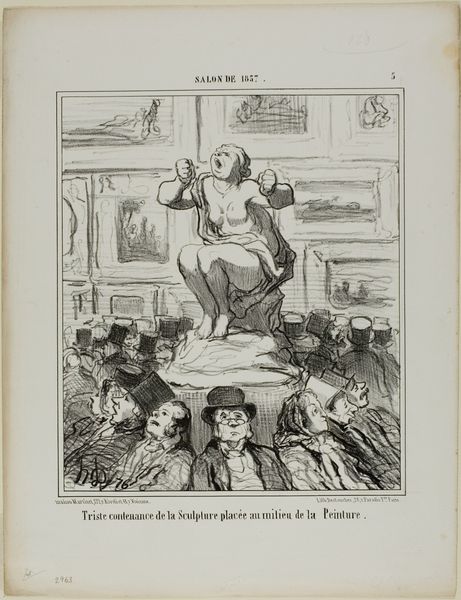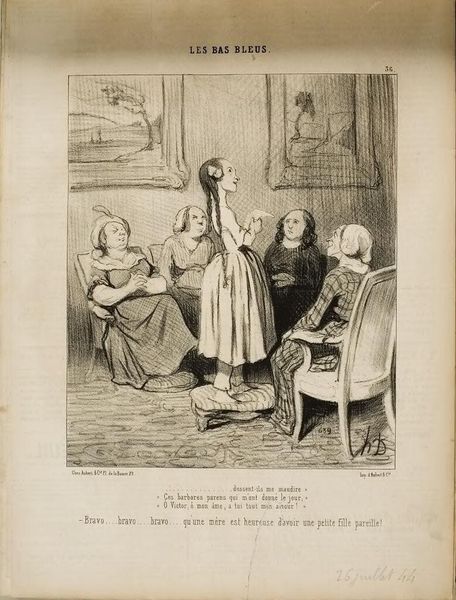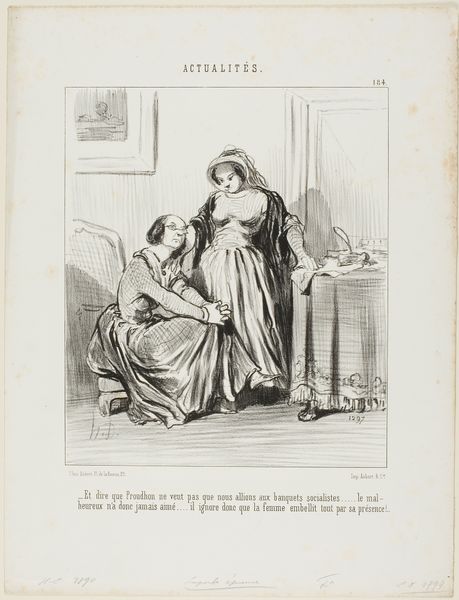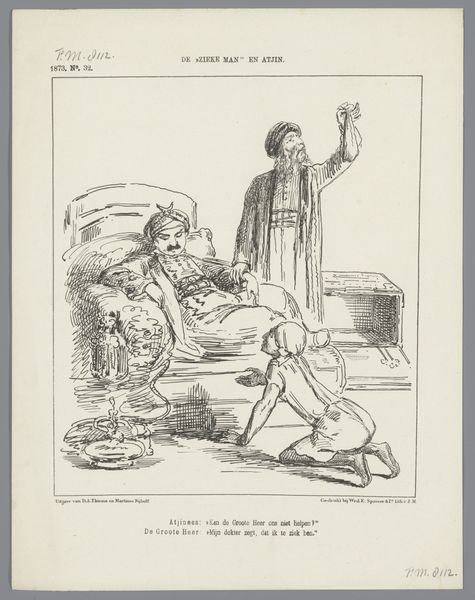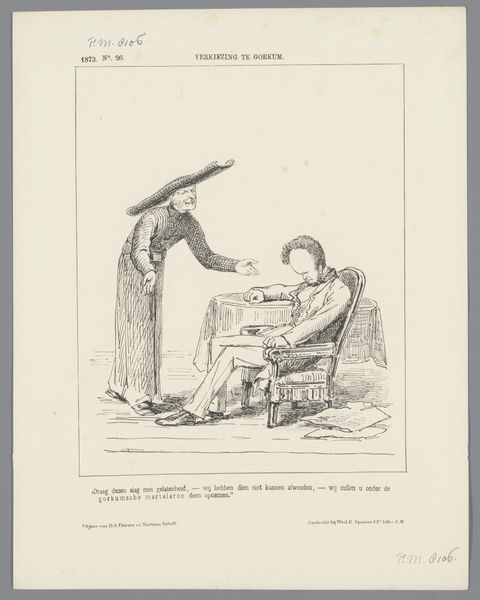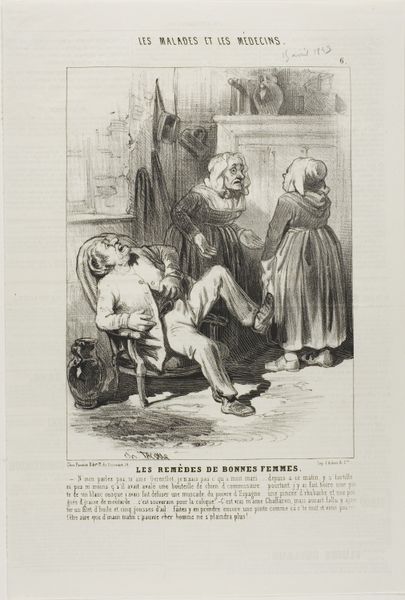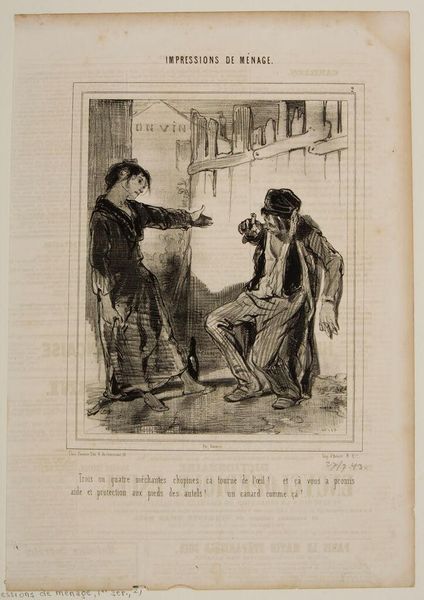
A Present for an Artist. The Chinese adore music, but they are also passionately fond of musicians. Their infatuation of this attitude is carried to extremes which are not easily understood in our civilized regions. Thus it is quite normal to see Chinese harnessed like horses to a cab and drive their idol around town. An when a pianist has improvised variations more or less brilliant of the "air of moonlight", "Ah!... you will say... Mama" or "King Dagobert", they find nothing better to bestow on him than a sword of honour which is accepted with a coolness equally laughable, plate 23 from Voyage En Chine 1844
0:00
0:00
drawing, lithograph, print, paper
#
portrait
#
drawing
#
lithograph
# print
#
caricature
#
figuration
#
paper
#
romanticism
#
orientalism
Dimensions: 215 × 187 mm (image); 356 × 272 mm (sheet)
Copyright: Public Domain
Honoré Daumier created this lithograph, "A Present for an Artist", sometime in the 19th century. As a lithograph, it would have begun with the artist drawing on a flat slab of limestone with a greasy crayon. The stone then undergoes a chemical process, allowing ink to adhere only to the drawn areas, which are then printed. Daumier made thousands of lithographs for periodicals during his career. This image is laden with satire, commenting on the perceived exoticism of Chinese culture, as well as the supposed absurdity of artistic adulation. The artist highlights a stark contrast, in which the Western pianist coolly accepts a sword of honor from his kneeling, seemingly subservient fans. There’s a clear hierarchy depicted here, created through Daumier's satirical hand, shaped by the socio-political lens of 19th-century France and its colonial attitudes. Daumier's choice of lithography was crucial to his social commentary, allowing for mass production and distribution of his critical observations. The image forces us to confront not only the subject of the artwork, but also the means by which it was made and disseminated, and the cultural biases it reflects.
Comments
No comments
Be the first to comment and join the conversation on the ultimate creative platform.

